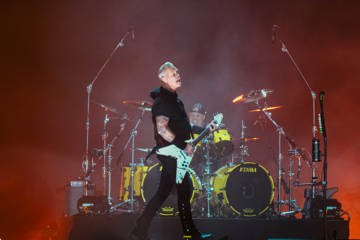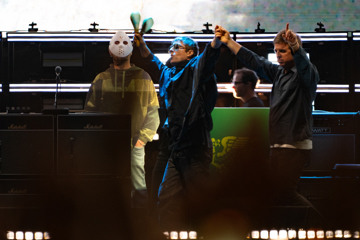You Can Now Hear What The Universe Sounds Like Thanks To NASA
Since 1958, NASA has managed to successfully land people on the moon, capture photographic evidence of black holes and drop robots onto the surface of Mars. Now, they can put another feather in their nerdy little caps - electronic music.
In space, nobody can hear you scream. But thanks to new scientific work conducted by the experts at NASA, the team at the James Webb Space Telescope and members of the blind and visually challenged community, breathtaking images of distant nebulas - which made global headlines back in July - have been turned into moody, cinematic electronic soundscapes through a technique called data sonification, allowing those without advanced degrees in science to hear what our universe sounds like in a totally unique way.
While the audio tracks were originally designed to help people who are blind or low-vision get an insight into the vast complexities and beauty of space, the three sonification tracks released by NASA and the JWST offer gloomy, harmonious and at times harrowing audio examples of our universe to anyone that tunes in.
"Music taps into our emotional centers," said musician Matt Russo, a physics professor at the University of Toronto who worked on the project. "Our goal is to make Webb's images and data understandable through sound - helping listeners create their own mental images."
Reminiscent of Brian Eno’s iconic Music For Airports or William Basinski’s Watermusic, the three tracks explore the complex soundscape of the Cosmic Cliffs in the Carina Nebula, explore the contrasting tones of two images that depict the Southern Ring Nebula, and identify the individual data points in a transmission spectrum of hot gas giant exoplanet WASP-96 b.
Despite not actually being recorded in space, the team behind the audio project mapped Webb’s data to sound, carefully composing music that accurately reflected and represented key details from within the iconic images; cach chemical element detected in the image is represented with a tone of a different pitch that corresponds to the colors in the image. Just like in the light spectrum, the lower frequency red colors produce a lower sound while blue produces a higher sound.
Cosmic Cliffs in the Carina Nebula:
Southern Ring Nebula:
WASP-96 b's Water Signatures:
This is the second time that NASA has unveiled stunning musical compositions to support imagery captured from our universe.
Don't miss a beat with our FREE daily newsletter
In 2021, the organisation released three tracks based on X-ray observations by NASA's Chandra X-ray Space Telescope and other ground and space-based telescopes, with each of the new pieces reflecting the distinct nature of the well-known black hole Messier 87 (famously photographed in 2017 by the international collaboration known as the Event Horizon Telescope), a cluster of young stars only one to two million years old, and a dying supernova explosion.







